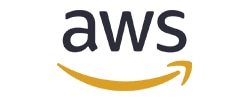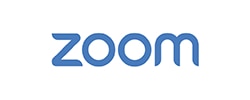June 27, 2025
How CPaaS Improves the Customer Experience
By streamlining customer support channels, Communications Platform as a Service solutions help organizations cut costs and boost consumer satisfaction.
- CPAAS DRIVES BUSINESS OUTCOMES
- COMMON CPAAS CHALLENGES
- CDW: A TRUSTED CPAAS PARTNER
- DRIVING REVENUE WITH CPAAS
As customer expectations evolve, CPaaS platforms offer a modern approach to scalable, responsive communication aligned to strategic business goals. By bringing multiple communication channels together under the umbrella of CPaaS, organizations can improve customer satisfaction, lower total costs, unify their IT ecosystems and attain business-critical insights.
Improved Customer Experience: According to PwC, 54% of U.S. consumers say CX at most companies needs improvement. What’s more, PwC notes, that 1 out of 3 customers will abandon a brand after a single negative experience. A CPaaS platform allows organizations to bring multiple communication channels together to create a unified experience for customers. Contrast this with organizations that have not implemented CPaaS: Often, these organizations use one tool for outbound sales messages, another for appointment reminders and yet another for automated customer service chat. It’s easy for customers to become overwhelmed and frustrated with so many tools, and organizations typically lack an effective way to bring together data from each channel to create a holistic picture of the customer journey.
Cost Efficiency: Almost always, more tools equal more money. In addition to ongoing licensing costs for various communication apps, organizations must also incur the hidden costs of maintenance and support. Additionally, some of these tools charge by usage, leading to another additional expense. The unified nature of CPaaS platforms means that organizations can pay one bill, helping to increase cost visibility and, in many cases, lowering the total cost of ownership. Cisco reports that more than two-thirds of businesses achieve a more than 28% revenue increase when they use CPaaS technology. And according to Custom Market Insights, cloud-based CPaaS platforms are helping businesses to lower their expenses. “The increasing adoption of cloud-based CPaaS solutions is transforming the communication landscape,” CMI notes. “Cloud-based platforms offer scalability, flexibility, and cost savings, allowing businesses to deploy and manage communication services with ease.”
IT Integration: In the past, adding a new communication channel or feature to an application almost always required a lengthy development project. But CPaaS offers ready-made building blocks, such as APIs and low-code tools, that let organizations quickly and easily add communication features such as SMS notifications to their existing IT tools. Instead of racing to adopt new tools to leverage new channels, IT teams can rely on CPaaS platforms as a bridge to connect existing applications to new communication methods. This shortens development lifecycles and empowers teams to experiment, iterate and innovate faster — allowing organizations to turn new ideas into real-world communication workflows in days rather than months. Additionally, this more unified environment reduces the management burden on internal IT teams by providing a standardized, centralized approach across all channels.
Analytics and Insights: Providing outstanding CX requires organizations to carefully balance the efficiencies of automation, the need for a human touch and the cross-channel insights that can only come from advanced analytics. Consider a typical customer journey: First, a customer sends a text message to a corporate support number. The next day, she tries interacting with the company’s support chatbot to get more insight on the issue. Later that afternoon, she calls a customer support line to escalate the case. If all of those interactions are logged in separate systems, it becomes incredibly difficult for organizations to bring that information together in a way that both tracks the individual customer journey and identifies patterns across the company. However, CPaaS platforms give organizations unified visibility into their customer communication data, making it easier to extract important insights.
Although the technology offers clear benefits, many organizations face challenges during the procurement, implementation and management phases of their CPaaS initiatives.
Measuring ROI: Often, it is easier for IT leaders to obtain budget to replace existing technologies than to convince executives to set aside money for an entirely new type of solution. For many organizations, their next CPaaS investment will also be their first, and so IT leaders must be thoughtful about building out the business case for the technology. The first step in measuring the ROI of a CPaaS solution is to identify key performance indicators that define success. These will vary from organization to organization depending on business goals, but KPIs may include reductions in call volume through automated messaging, increases in customer satisfaction scores or improvements in conversion rates. Clear metrics help to build executive support and prove the value of CPaaS solutions and give organizations the information they need to fine-tune these platforms over time. As they make their decisions about which CPaaS platforms to adopt, leaders should make sure the tools they are considering provide robust analytics and reporting around their most important objectives.
Technical Considerations: With CPaaS platforms offering a wide array of channels and features, it is important for organizations to rightsize solutions for both their business needs and their existing IT environments. Leaders must decide which communication channels matter most for their customers, forecast volume and usage patterns, and identify interdependencies and integrations with existing systems. They must also be sure to work closely with stakeholders from operations, customer service and marketing, as well as other departments impacted by CPaaS solutions. If organizations are not deliberate about these considerations during the planning stage, their CPaaS deployments may run into snags when it comes time to integrate a new platform with back-end systems such as customer databases, customer relationship management solutions, contact center software or industry-specific applications such as electronic health records or banking systems. Challenges may include data mapping, real-time synchronization and managing integrations as systems evolve over time. Additionally, organizations must integrate new CPaaS workflows with their existing internal processes (for instance, making sure new alerts to on-call technicians tie into incident management platforms). Without appropriate integration, CPaaS platforms can become siloed tools, limiting their effectiveness.
Security: Because CPaaS solutions involve customer data and messaging content flowing through external platforms, security and regulatory compliance is a top-of-mind concern for organizations implementing the technology. This is especially true for organizations in highly regulated industries, such as healthcare and financial services, which are some of the most active adopters of CPaaS platforms. During the planning stage, IT and business leaders must vet CPaaS solutions for security features such as encryption and compliance certifications. Often, internal security teams must spend time reviewing how a CPaaS platform stores data and how the solution authenticates via APIs. These reviews can slow down deployment, so it is important for organizations to build time into the planning process to ensure that these considerations are thoroughly addressed. It is also critical that CPaaS solutions simplify compliance with regulatory requirements to obtain customer consent for messaging and honor opt-out requests. Neglecting these concerns can lead to an erosion in customer trust or even result in legal action.
Precisely because CPaaS represents a new technology category for many business and IT leaders, organizations often turn to a trusted partner such as CDW to help them define their CPaaS strategy, choose a platform, implement the technology and help them optimize new tools over time.
Leading Vendor Partnerships: CDW maintains top certifications and strong relationships with all major CPaaS vendors. This gives organizations access to a wide array of options, deep technical expertise and vendor-agnostic advice from CDW’s solution architects. When organizations partner with CDW, they can be confident that they are receiving recommendations tailored to their specific needs and environments.
CPaaS Strategy: As IT leaders seek budget approval for new investments, they often lean on CDW’s experts to help them build out strong business cases that vividly illustrate the value of the technology. CDW solution architects can help IT leaders articulate the need for appointment reminders, one-time passwords, tracking notifications and other critical CPaaS features.
Cross-Industry Expertise: CDW has experts with decades of experience working with organizations in specific verticals such as healthcare, retail and financial services. This expertise helps solution architects anticipate the needs of organizations in particular industries and solve sector-specific challenges. Rather than coming into CPaaS projects with hypotheticals, CDW’s experts bring best practices and proven playbooks from the field.
Implementation and Integration: CDW specializes in integrating CPaaS solutions with existing platforms such as Salesforce, ServiceNow and Epic, ensuring seamless data flows and unified CX. Solution architects from CDW understand both the technical and business sides of integration, from APIs and workflows to change management, and they can guide internal stakeholders through deployment with minimal disruption and maximum impact.
Click Below to Continue Reading
Deep CX Knowledge: CPaaS is not just another back-end technology that supports business operations; CPaaS platforms have a direct, significant impact on CX. CDW’s experts have decades of experience helping organizations to leverage new technologies to achieve their customer support goals. Along with technical expertise, this CX-specific knowledge is a critical component of CPaaS success.
Security Services: Security and compliance are top considerations in any CPaaS deployment. CDW’s teams include security specialists who can walk IT and business leaders through the security features of various offerings, audit existing security tools and processes, and incorporate security best practices into solution designs. CDW’s solution architects have extensive experience executing projects in highly regulated environments, helping organizations fill internal knowledge gaps and avoid costly security-related mistakes.
Talent Augmentation: Talent shortages continue to be a problem for organizations looking to fill IT jobs, especially roles dealing with emerging and quickly evolving technologies such as CPaaS. By bringing in outside experts from CDW, organizations gain the expertise they need without the cost and hassle of a lengthy hunt for new full-time staffers. This talent augmentation can help organizations both accelerate their CPaaS deployments and manage their new solutions over time.
Ongoing Optimization: For most organizations that work with CDW, partnership is not a one-time event that ends with the launch of a new technology tool or platform. CDW’s experts provide ongoing managed services for a range of technologies, and they can proactively monitor performance, implement updates, identify new opportunities for improvement and address emerging cybersecurity threats. A partnership with CDW gives leaders ongoing access to in-depth expertise about the latest technologies that can help accelerate their business.
Driving Revenue With CPaaS
Reduced Cancellations: Healthcare providers and other service-based businesses use CPaaS tools to send automated appointment reminders, helping to reduce no-shows and recover billable hours that might otherwise go unfilled.
Upselling: Retailers and subscription providers can use the real-time contextual information provided by the AI features of CPaaS platforms to deliver personalized upsell offers to customers, helping to increase order totals.
Abandoned Cart Recovery: When customers abandon their online shopping carts, e-commerce businesses can use CPaaS tools to send targeted, timely reminders via text or WhatsApp, helping to boost conversion rates and reclaim lost sales.
Lower Churn: By using CPaaS solutions to proactively engage with inactive customers or those nearing renewal deadlines, businesses can reduce customer attrition and shore up recurring revenue.
Brad Clarke
CDW Contributor
Logan Boggs
Managing Consulting Engineer







